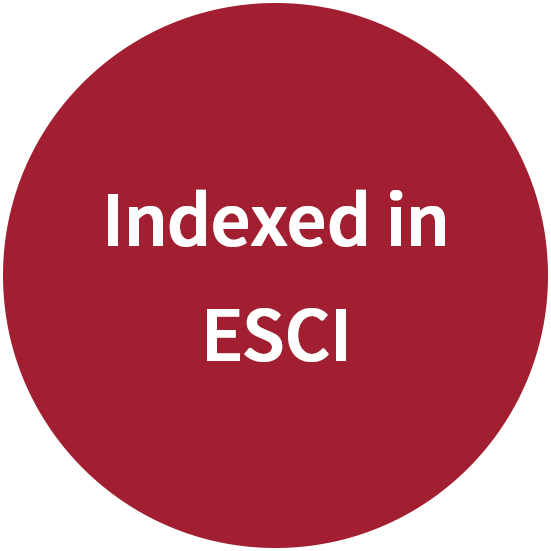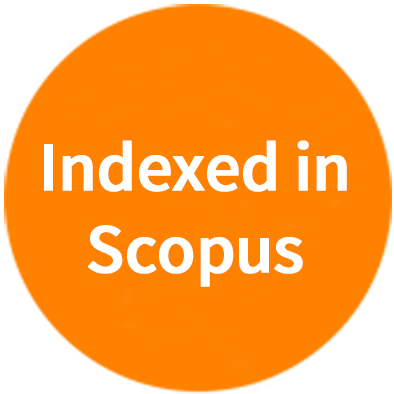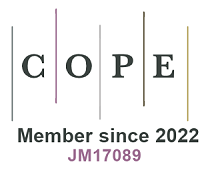The novel SCD MED ALERT mHealth app: empowering patients with sickle cell disease
Abstract
Aim: Sickle cell disease (SCD) is a debilitating monogenic disorder of red blood cells, characterized by acute pain episodes during vaso-occlusive crises (VOCs). Here, we developed and validated a medical app, SCD-MED-ALERT, for home management of acute pain in patients with SCD.
Methods: The SCD-MED-ALERT app is a multilingual and standalone application for iOS and Android. It was proposed to young adult patients with SCD (n = 47) attending comprehensive sickle cell centers within the Società Italiana Talassemie ed Emoglobinopatie (SITE) network. Patient-Activation-Measure-13 (PAM-13) questionnaire and mHealth App Usability Questionnaire (MAUQ) were used to evaluate patient activation levels in self-management and the app’s usability, respectively.
Results: Among SCD patients using SCD-MED-ALERT, the total PAM score significantly increased from 40 ± 4 (mean ± SD) to 42 ± 4 (P < 0.001). Multivariate analysis revealed that the baseline PAM score was positively associated with patients on crizanlizumab plus hydroxyurea therapy (P = 0.015), suggesting a higher sense of
Conclusion: Our study shows that the SCD-MED-ALERT app enhances patients’ sense of self-efficacy and proactivity in managing pain at home during acute pain crises. We propose that this app might contribute to empowering SCD patients and assist physicians in identifying patients who may benefit from more intensive treatment(s).
Keywords
INTRODUCTION
Sickle cell disease (SCD) is the most common hereditary red cell disorder worldwide[1]. It is an autosomal recessive disease caused by a point mutation in the beta-globin chain gene, resulting in the production of hemoglobin S (HbS). The clinical picture of SCD is primarily characterized by chronic hemolysis and acute sickle cell-related vaso-occlusive crisis (VOC)[2], which are the main reasons for hospitalization among young adult SCD patients[3,4]. Although several factors - such as temperature, humidity, stress, and infections - have been identified as potential triggers of acute VOCs, the underlying causes in most cases remain undetermined[3]. Moreover, the recurrent and unpredictable nature of acute VOCs makes SCD patients frequent users of emergency departments compared to those with other severe hemoglobinopathies, such as transfusion-dependent thalassemia[3,5].
Previous studies have identified two main groups of factors involved in the pathogenesis of acute VOCs: (i) sickle red cell-related factors, including cyclic HbS polymerization, dense red cells, and erythroid microparticles; (ii) inflammation-related factors, such as activated vascular endothelial cells expressing
Up to now, various approaches have been explored to improve pain management during acute VOCs in SCD patients. However, most studies have focused on acute VOCs requiring hospitalization[15,26-28], whereas data on strategies for home management of moderate to severe VOCs remain limited. Growing evidence from other medical settings, such as in cancer patients, suggests that mobile health apps (mHealth apps) might facilitate healthcare delivery, support self-management, and promote personalized interventions in daily disease management[29-31]. mHealth apps might be categorized based on (i) their target users (patients or healthcare providers) and (ii) the nature of patient-provider interaction (interactive or non-interactive mHealth)[32-35]. In the context of SCD, mHealth apps have been developed to record pain crises, monitor symptoms, and engage and educate patients and their families [Supplementary Table 1]. Most of these apps have been developed by teams from universities or university hospitals (42% of total SCD apps; Supplementary Table 1), followed by patient advocacy groups or foundations (29% of total SCD apps, Supplementary Table 1) and private companies (29% of total SCD apps, Supplementary Table 1)[36-38]. Although studies on SMART, iMANAGE, InCharge Health, and OpPill apps support the clinical utility of mHealth apps in SCD management [Supplementary Table 1][39,40], further research is needed to assess their efficacy and usability in this patient population. Our review of existing mHealth apps for SCD revealed a critical gap - a dedicated app for home management of pain during mild to severe VOCs is still lacking. Addressing this unmet need is extremely important for capturing under-recorded sickle cell-related pain events, improving clinical pain management and supporting patients in their daily lives. The SWAY study also demonstrated that patients experiencing frequent VOCs were more likely to report a significant impact on their family/social life, school attendance, or employment stability[18]. Additionally, mHealth apps designed to support patients during pain episodes at home might enhance patient empowerment and
Here, we developed SCD MED ALERT, a new mHealth app designed to improve home management of acute pain during VOCs in SCD patients. We used the PAM-13 questionnaire to assess patient activation levels in self-management and the MAUQ questionnaire to evaluate app usability.
Additionally, we analyzed recorded events corresponding to SCD MED ALERT usage among SCD patients. Our findings show that SCD MED ALERT was used for home management of mild to severe pain during acute VOCS, which was often accompanied by fatigue and absenteeism from school or work. Taken together, our data validate SCD MED ALERT as a novel tool for assisting SCD patients in managing acute VOC-related pain at home and aiding physicians in identifying candidates for more intensive medical treatment combined with hydroxyurea or for innovative therapies.
METHODS
Study design and app development
The present study was organized in three steps [Figure 1]. Step 1: Development of the SCD MED ALERTapp; step 2: Testing and validation of the mHealth app over a 0-2 months period of observation using the PAM-13 questionnaire and MAUQ; step 3: long-term real-life testing of the app over a 6-month period in patients with SCD. Preliminary data were presented at the annual meeting of the American Society of Hematology (ASH)[42].
Step 1: SCD MED ALERT - functionalities and implementation
Functionalities: The “SCD MED ALERT” app was designed to enhance the self-management of acute pain in patients with SCD by providing direct links to Società Italiana Talassemie ed Emoglobinopatie (SITE) information materials and best practice guidelines [Figure 2]. The app offers the following key features:
Figure 2. Interface of the “SCD MED ALERT” app. (A) Home screen; (B) New event entry; (C) Pop-up menu for Alert configuration; (D) Alert configuration; (E) Daily scheduling of the SCD calendar; (F) Monthly scheduling of the SCD calendar; (G) Push notification reminding users to update their health status; (H) Hospitals tab displaying a list of specialized centers with emergency department; (I) Google Maps integration providing location and directions to the selected emergency department. SCD: Sickle cell disease, MED: medical.
• Health record management: Users can upload and store images and/or files for quick access within the app;
• Emergency department (ED) locator: A built-in geolocation feature enables users to find EDs categorized by region and province (Italy), with “maps apps” integrated into the mobile device’s system;
• Pain crisis diary: Patients can document pain episodes, specifying the location, intensity, and associated symptoms (e.g., fatigue, inability to attend school/work);
• Home analgesia guidance: The app provides references to home-based therapeutic analgesia protocols tailored to pain intensity, helping patients initiate appropriate pain management based on best practices;
• Hospital analgesia guidance: Healthcare professionals in EDs can access SITE’s emergency pain management algorithm for sickle cell anemia through a direct hyperlink (https://www.site-italia.org/scienza-e-formazione/algoritmi.html; Italian document). This algorithm was co-developed by some of the present paper’s authors (Lucia De Franceschi, Gian Luca Forni, Maddalena Casale, Silverio Perrotta, Valeria Maria Pinto)[43];
• Implementation details: The SCD MED ALERT app operates independently on a user’s device, ensuring that no patient data are transmitted externally. Additionally, all drug dosage information is built into the app, eliminating the need for an Internet connection - a key consideration for both privacy and usability;
• Automated reminders: When a pain episode is recorded, the app generates reminders via events in the device’s standard calendar. These reminders serve to monitor the pain status and provide timely follow-ups;
• Multilingual support: The app is currently available in Italian, French, and English for both iOS and Android;
• Technology framework: The app is built using Ignite, an Open Source React Native framework. Ignite, developed by Infinite Red, is described as a boilerplate - a structured collection of libraries, example code, and best practices designed to streamline software development. This curated selection of libraries ensures a smooth development cycle, avoiding incompatibilities and roadblocks, and focusing only on the app functionalities. The app’s Look and Feel (the User Experience) have also been carefully considered;
• Cross-platform compatibility: React Native was chosen from the onset to enable cross-platform development, given budget and time constraints. The performance advantages of native apps (developed using platform-specific programming languages such as Java and Kotlin for Android, and Objective C and Swift for iOS) are not so useful for this kind of application. Additionally, the cross-platform ensures broad compatibility with old devices.
Step 2: Validation of the SCD MED ALERT app
To validate the SCD MED ALERT app, we proposed it to male and female patients with SCD (SS, AS, Sβ, SC genotypes) who met the following criteria: age over 18 years, able to use applications on mobile platforms (iOS and Android), and a history of more than two VOCs in the last 6-8 months before the study. SCD patients were recruited from comprehensive SITE centers for hemoglobinopathies in Verona and Naples (Italy). To assess patients’ sense of activation and perceived “self-efficacy” regarding their knowledge and confidence in self-management of SCD, the Patient Activation Measure-13 (PAM-13) questionnaire was used. The PAM-13 consists of 13 items with response options ranging from “strongly disagree” to “strongly agree” [Supplementary Table 2]. The total PAM score was obtained by dividing the raw score by the number of answered items and multiplying the result by 13[44]. The PAM-13 questionnaire was administered at baseline and again 2 months after the introduction of the SCD MED ALERT app. To evaluate the app’s usability, the mHealth App Usability Questionnaire (MAUQ) was employed. We modified the standard MAUQ to include two additional questions: one soliciting patient feedback on potential app improvements (question #19: “What would you recommend to improve the application?”) and another confirming whether the app was used to report pain crises (question #20 “Have there been reports of painful events in the application?”)[45]. The MAUQ was evaluated after 2 months of app usage.
Step 3: Real-life testing of the SCD MED ALERT app
In step 3 of the study, we conducted a real-life evaluation of the SCD MED ALERT app among a subgroup of patients who had used the app for six months. Data collected via the app included the number of VOC episodes, pain intensity (measured using the pain visual analog scale), pain site, fatigue, and absence from school or work. Fatigue was recorded as a binary variable (yes/no)[46,47].
Statistical analysis
Descriptive analysis was performed using means and standard deviation (SD), counts, and percentages. Mean PAM-13 scores, the total score, and the individual item score - were compared between baseline and the two-month follow-up with the paired t-test or the Wilcoxon signed-rank test. Age differences between treatment groups (chronic pain treatment, crizanlizumab/hydroxyurea therapy, chronic erythroexchange) and non-treated patients were analyzed using the unpaired t-test or the Mann-Whitney U test. The normality of distributions was assessed using the Shapiro-Wilk test. Multivariate analysis was conducted to explore the association between PAM scores and relevant covariates. The equality of proportions was tested using the Chi-square test. All analyses were performed using R version 4.2.2 (R Core Team, 2022), with a significance level set at 5%.
RESULTS
In this study, we evaluated 47 patients with SCD [Table 1]. Among them, 60% (28/47) were females, with the following genotype distribution - 51.1% SS, 25.5% Sβ, 14.9% SC, and 8.5% AS [Table 1]. This diversity in genotypes reflects the composition of the Italian SCD population, which includes first- and second-generation immigrants from SCD-endemic areas, mainly corresponding to SS and SC genotypes, and local Caucasian SCD patients exhibiting SS and Sβ genotypes[48]. Notably, symptomatic sickle cell carriers (AS) were also involved. Two of these individuals had heterozygous pyruvate kinase deficiency. No additional red cell defects were identified in the remaining two AS patients, supporting the observation that sickle cell carriers might not always be asymptomatic[49]. Seventeen patients (17/47, 36%) were under chronic pain treatment, including non-steroidal anti-inflammatory drugs (12, 25.5%), paracetamol (4, 8.5%), opiates
Demographic characteristics and medical treatments of patients
| Parameter | Patients (n = 47) |
| Age, years, mean (SD) | 32.2 (10.3) |
| Female, n (%) | 28 (59.6%) |
| Genotype: SS, Sβ, SC, AS | 24 (51.1 %), 12 (25.5 %), 7 (14.9 %), 4 (8.5 %). |
| Pain crises, n (%) | 27 (57.4%) |
| EEX, n (%) | 19 (40.4%) |
| Hydroxyurea (HU), n (%) | 37 (78.7%) |
| Crizanlizumab plus HU, n (%) | 9 (19.1%) |
| NSAID, n (%) | 12 (25.5%) |
| Paracetamol, n (%) | 4 (8.5%) |
| Oral opiates, n (%) | 3 (6.4%) |
| Other analgesia, n (%) | 3 (6.4%) |
Here, we chose to use the PAM-13 questionnaire, one of the most widely utilized and translated tools for assessing patient activation levels in self-management[50,51]. Additionally, PAM-13 has been validated (i) in adult patients in different health settings[52,53]; and (ii) in the Italian patient population[44]. The timing of PAM-13 administration, 2 months after the use of the SCD MED ALERT app, was consistent with previous studies in other settings[54,55]. In our study, the mean PAM-13 score was 3.0 ± 0.3 at baseline and 3.2 ± 0.3 after 2 months (P < 0.001) [Figure 3 and Supplementary Table 2]. The total PAM score increased from
Figure 3. PAM-13 responses (n = 47) after 2 months of SCD MED ALERT use (see Supplementary Table 2 for item definitions). PAM-13: Patient-activation-measure-13; SCD: sickle cell disease, MED: medical.
All patients using the SCD MED ALERT app for 2 months also completed the MAUQ questionnaire
Figure 4. MAUQ responses (n = 47) after 2 months of SCD MED ALERT use (definitions of items are reported in Supplementary Table 3). MAUQ: mHealth app usability questionnaire; SCD: sickle cell disease, MED: medical.
In a subset of 27 SCD patients, we collected the recorded pain episodes during acute VOCs using the app over a six-month observation period: 18 patients experienced and documented crises and 9 patients did not (8/9) or did not report any acute events (1/9) [Figure 5A]. In the subgroup of patients with crises, the mean number of reported events was 45.5 (range: 41-50). The most frequent sites of pain were the hip (25.7%), lumbar region (16.2), knees (12.2%), chest (12.2%), head (10.8%), wrists (8.8%), shoulders (3.4%), dorsal region (3.4%), abdomen (3.4%), legs (2.7%), and ankles/feet (1.4%) [Figure 5B]. These findings are consistent with the most commonly reported pain sites in the PiSCES study[58,59]. Pain severity varied among the 18 patients who experienced VOCs. Specifically, 5 patients reported 1 event (pain VAS score: 1-3),
Figure 5. Long-term real-life testing analysis of reported pain crises reported, including pain sites (A and inset); intensity and number of events (B), and associated fatigue and absence from school/work(C); (D) in 27 patients after 6 months of SCD MED ALERT use. VAS: Visual analog scale; SCD: sickle cell disease, MED: medical.
DISCUSSION
Our study supports the use of the SCD MED ALERT app in the clinical management of patients with SCD. We found that SCD MED ALERT improves patient self-efficacy, as indicated by the increased activation level in the PAM-13 questionnaire. This improvement reflects greater patient empowerment and proactivity in managing their disease experience through the app. Indeed, SCD MED ALERT offers a user-friendly approach to home management of pain for patients with SCD. Previous studies have shown that pain perception is subjective and influenced by psychological, anthropological, and social factors[21,24,61]. Therefore, developing patient-focused complementary strategies, such as an mHealth app, is essential to improve pain assessment and worsening of fatigue, in both routine clinical care and research. A desirable patient-centered approach to acute sickle cell-related pain events might involve the use of mobile health (mHealth) applications to track pain levels and treatments, combined with specialized medical assessments for SCD patients[62]. Similar strategies are already being implemented in other home care settings, such as cancer patients[63] and post-surgical pain management in children[30]. For example, the “Panda” mHealth app provides alerts for pain medication administration based on a physician’s schedule, allowing caregivers to record post-surgical pain levels and related treatments[64]. This app includes additional features such as editable patient profiles, pain medication schedules, adherence tracking and pain intensity monitoring. It also offers a demo section for practice use[64]. In our study, a review of the literature on acute pain management - both within and beyond the SCD context - guided the design of the SCD MED ALERT app. Compared to other validated mHealth apps for SCD patients, SCD MED ALERT offers unique functionalities [Supplementary Table 4]. Specifically, it supports home-based pain management, locates comprehensive SCD centers with ED whenever pain intensity > 9, and records pain site, intensity, fatigue worsening, medication usage, and absences from school/work [Supplementary Table 4]. As demonstrated in the SWAY study and the clinical trial involving canakinumab[18,60], patients with SCD are particularly vulnerable to fatigue. In our study, almost 80% of patients experienced fatigue during VOCs. Notably, SCD MED ALERT integrates pain, fatigue, and absenteeism tracking - another feature that distinguishes it from other mHealth apps for SCD patients [Figure 5C and Supplementary Table 4]. As shown in Figure 5, the app enabled us to identify SCD patients experiencing 2-3 VOCs with a VAS pain intensity > 4, who also reported worsening fatigue and absences from school/work [Figure 5C and D]. Furthermore, our findings show that patients with the severest VOC-related pain were unemployed. This aligns with (i) the SWAY study, which reported that one-third of SCD patients had been dismissed from their jobs due to their condition, and (ii) a single-center British study, which found that 54% of SCD patients faced difficulties at work/school[18,65]. These patients might be referred for more frequent clinical follow-ups and reassessments of their sickle cell-related medical treatments. When verifying patient adherence to HU treatment and/or considering enrollment in active clinical studies, we observed that patients on crizanlizumab plus hydroxyurea therapy showed higher self-efficacy, as indicated by PAM scores, compared to those on HU alone. This suggests that this subgroup of SCD patients is more motivated to try new therapeutic options, including mHealth, compared to those on HU monotherapy. Collectively, our findings underscore the importance of empowering patient’s self-identity, ultimately leading to improved QoL.
The SCD MED ALERT app was appreciated by SCD patients, as shown by the MAUQ questionnaire. This indicates that SCD patients might require facilitator tools to reinforce their self-identity[41]. Thus, SCD MED ALERT might represent a feasible way to promote behavioral changes in SCD patients, as they “want to understand what to expect”[41] with their disease. Indeed, in question # 19, SCD patients suggested enhancing the app with: (i) education materials to support the understanding of symptoms; (ii) medication schedule reminders; and (iii) features that strengthen community support. Altogether, these patient-driven refinements highlight empowering SCD patients requires personalized illness education and improved communication with healthcare providers[41,66-68]. The latter is particularly crucial, as it might influence patient-centered outcomes, such as therapy adherence and recovery from acute sickle cell-related events.
The clinical significance of SCD MED ALERT is further supported by the concordance between our data and the PiSCES study concerning pain sites. Additionally, as observed in the PiSCES study, using ED visits as a surrogate marker for pain events in SCD patients might be insufficient, as it likely underestimates the actual frequency of sickle cell-related pain events by excluding those managed at home[69]. Clinicians should, therefore, evaluate not only the number of severe pain crises leading to ED visits, but also the complexity of the pain itself in all the manifestations that patients have to manage in their daily lives.
Although SCD MED ALERT might represent a novel tool supporting both patients and physicians in clinical SCD management, our study has two limitations. First, it involved a limited number of comprehensive SCD centers. The subgroup of patients used to evaluate the characteristics of VOC-related pain was small. Moving forward, we plan to: (i) improve the SCD MED ALERT app based on patient feedback; (ii) expand its use within the network of Italian comprehensive SCD centers; and (iii) verify its possible benefits in a larger patient cohort.
In conclusion, our findings indicate that the use of SCD MED ALERT increases patients' sense of self-efficacy and proactivity. Moreover, the app might be a valuable tool for clinicians specializing in hemoglobinopathies. It might help identify patients who require more intensive medical treatment toward personalized medicine and contribute to the possible prevention of drug addiction in these patients.
DECLARATIONS
Acknowledgments
The authors thank the patients who discussed the SCD MED ALERT app in the development and validation processes.
Authors’ contributions
Made substantial contributions to the conception and design of the study and performed data analysis and interpretation: Villaboni S, Pinto VM, Gianesin B, Casale M, Perrotta S, Mazzi F, Calvillo M, De Franceschi L, Forni GL
Programmed technical and material support for the app: Pirrone R, Cavellini P
Performed data acquisition, and also provided administrative, technical, and material support: Villaboni S, Casale M, Ceolan J, Gigante A
Reviewed and verified the final version of the manuscript: Villaboni S, Pinto VM, Gianesin B, De Franceschi L, Forni GL
Wrote and edited the manuscript: Villaboni S, Origa R, De Franceschi L, Forni GL
All authors discussed the results and contributed to the final manuscript.
Availability of data and materials
The data supporting the findings of this study are available from the corresponding author upon reasonable request.
Financial support and sponsorship
None.
Conflicts of interest
Pirrone R and Cavellini P are employed by MOST srl as software developers. The company did not provide any funding for this research, and the conclusions of this study are not influenced by the company. The authors declared that, aside from the aforementioned affiliation, there are no other conflicts of interest related to this work.
Ethical approval and consent to participate
The study was conducted in accordance with the Declaration of Helsinki and ICH guidelines for good clinical practice, ethical approval document no. 264/2019. All patients provided written informed consent.
Consent for publication
Not applicable.
Copyright
© The Author(s) 2025.
Supplementary Materials
REFERENCES
1. Piel FB, Rees DC, DeBaun MR, et al. Defining global strategies to improve outcomes in sickle cell disease: a lancet haematology commission. Lancet Haematol. 2023;10:e633-86.
2. Pinto VM, Balocco M, Quintino S, Forni GL. Sickle cell disease: a review for the internist. Intern Emerg Med. 2019;14:1051-64.
3. Brousseau DC, Owens PL, Mosso AL, Panepinto JA, Steiner CA. Acute care utilization and rehospitalizations for sickle cell disease. JAMA. 2010;303:1288-94.
4. Dampier C, LeBeau P, Rhee S, et al. Comprehensive Sickle Cell Centers (CSCC) Clinical Trial Consortium (CTC) Site Investigators. Health-related quality of life in adults with sickle cell disease (SCD): a report from the comprehensive sickle cell centers clinical trial consortium. Am J Hematol. 2011;86:203-5.
5. Carroll CP, Haywood C Jr, Fagan P, Lanzkron S. The course and correlates of high hospital utilization in sickle cell disease: evidence from a large, urban medicaid managed care organization. Am J Hematol. 2009;84:666-70.
6. Ballas SK. Current issues in sickle cell pain and its management. Hematology Am Soc Hematol Educ Program. 2007:97-105.
7. Pinto VM, Mazzi F, De Franceschi L. Novel therapeutic approaches in thalassemias, sickle cell disease, and other red cell disorders. Blood. 2024;144:853-66.
8. Hebbel RP, Osarogiagbon R, Kaul D. The endothelial biology of sickle cell disease: inflammation and a chronic vasculopathy. Microcirculation. 2004;11:129-151.
9. Hebbel RP, Belcher JD, Vercellotti GM. The multifaceted role of ischemia/reperfusion in sickle cell anemia. J Clin Invest. 2020;130:1062-72.
10. Kalish BT, Matte A, Andolfo I, et al. Dietary ω-3 fatty acids protect against vasculopathy in a transgenic mouse model of sickle cell disease. Haematologica. 2015;100:870-80.
11. Francis RB, Johnson CS. Vascular occlusion in sickle cell disease: current concepts and unanswered questions. Blood. 1991;77:1405-1414.
12. Field JJ, Ballas SK, Campbell CM, et al. AAAPT diagnostic criteria for acute sickle cell disease pain. J Pain. 2019;20:746-59.
13. Boonstra AM, Stewart RE, Köke AJ, et al. Cut-off points for mild, moderate, and severe pain on the numeric rating scale for pain in patients with chronic musculoskeletal pain: variability and influence of sex and catastrophizing. Front Psychol. 2016;7:1466.
14. Darbari DS, Brandow AM. Pain-measurement tools in sickle cell disease: where are we now? Hematology Am Soc Hematol Educ Program. 2017;2017:534-41.
15. De Franceschi L, Mura P, Schweiger V, et al. Fentanyl buccal tablet: a new breakthrough pain medication in early management of severe vaso-occlusive crisis in sickle cell disease. Pain Pract. 2016;16:680-7.
16. Hehn CA, Baron R, Woolf CJ. Deconstructing the neuropathic pain phenotype to reveal neural mechanisms. Neuron. 2012;73:638-52.
17. Kehlet H, Dahl JB. The value of “multimodal” or “balanced analgesia” in postoperative pain treatment. Anesth Analg. 1993;77:1048-56.
18. Osunkwo I, Andemariam B, Minniti CP, et al. Impact of sickle cell disease on patients’ daily lives, symptoms reported, and disease management strategies: results from the international sickle cell world assessment survey (SWAY). Am J Hematol. 2021;96:404-17.
19. Hanna M, Montero Matamala A, Perrot S, Varrassi G. Delivery of multimodal analgesia to effectively treat acute pain: a review from roma pain days. Cureus. 2022;14:e22465.
20. Savarese JJ, Tabler NG Jr. Multimodal analgesia as an alternative to the risks of opioid monotherapy in surgical pain management. J Healthc Risk Manag. 2017;37:24-30.
21. Knisely MR, Pugh N, Kroner B, et al. Sickle Cell Disease Implementation Consortium. Patient-reported outcomes in sickle cell disease and association with clinical and psychosocial factors: report from the sickle cell disease implementation consortium. Am J Hematol. 2020;95:1066-74.
22. Haywood C Jr, Beach MC, Lanzkron S, et al. A systematic review of barriers and interventions to improve appropriate use of therapies for sickle cell disease. J Natl Med Assoc. 2009;101:1022-33.
23. Ji RR, Xu ZZ, Gao YJ. Emerging targets in neuroinflammation-driven chronic pain. Nat Rev Drug Discov. 2014;13:533-48.
24. McClish DK, Penberthy LT, Bovbjerg VE, et al. Health related quality of life in sickle cell patients: the PiSCES project. Health Qual Life Outcomes. 2005;3:50.
25. Minniti C, James J, Andemariam B, et al. Use of opioids in patients with sickle cell disease (SCD): a country and age analysis of the international sickle cell world assessment survey (SWAY). https://library.ehaweb.org/eha/2020/eha25th/294008/caterina.minniti.use.of.opioids.in.patients.with.sickle.cell.disease.%28scd%29.a.html. [Last accessed on 17 Mar 2025]
26. Pinto VM, Gianesin B, Sardo S, et al. Safety and efficacy of ketorolac continuous infusion for multimodal analgesia of vaso-occlusive crisis in patients with sickle cell disease. Orphanet J Rare Dis. 2024;19:22.
27. L DF, G F, A V, et al. A pilot study on the efficacy of ketorolac plus tramadol infusion combined with erythrocytapheresis in the management of acute severe vaso-occlusive crises and sickle cell pain. Haematologica. 2004;89:1389-91.
28. Forni GL, Finco G, Graziadei G, et al. Development of interactive algorithm for clinical management of acute events related to sickle cell disease in emergency department. Orphanet J Rare Dis. 2014;9:91.
29. Marcolino MS, Oliveira JAQ, D’Agostino M, Ribeiro AL, Alkmim MBM, Novillo-Ortiz D. The impact of mHealth interventions: systematic review of systematic reviews. JMIR Mhealth Uhealth. 2018;6:e23.
30. Moreno-Ligero M, Moral-Munoz JA, Salazar A, Failde I. mHealth intervention for improving pain, quality of life, and functional disability in patients with chronic pain: systematic review. JMIR Mhealth Uhealth. 2023;11:e40844.
31. Piette JD, Newman S, Krein SL, et al. Patient-centered pain care using artificial intelligence and mobile health tools: a randomized comparative effectiveness trial. JAMA Intern Med. 2022;182:975-83.
32. Shah N, Jonassaint J, De Castro L. Patients welcome the sickle cell disease mobile application to record symptoms via technology (SMART). Hemoglobin. 2014;38:99-103.
33. Anderson LM, Leonard S, Jonassaint J, Lunyera J, Bonner M, Shah N. Mobile health intervention for youth with sickle cell disease: impact on adherence, disease knowledge, and quality of life. Pediatr Blood Cancer. 2018;65:e27081.
34. Elander J, Bij D, Kapadi R, et al. Development and validation of the satisfaction with treatment for pain questionnaire (STPQ) among patients with sickle cell disease. Br J Haematol. 2019;187:105-16.
35. Abrams C, Davila N, Melvin C, et al. Engagement with incharge app - a mobile health intervention to improve adherence to hydroxyurea among individuals with sickle cell disease. Blood. 2023;142:1144.
36. Smith WR, Penberthy LT, Bovbjerg VE, et al. Daily assessment of pain in adults with sickle cell disease. Ann Intern Med. 2008;148:94-101.
37. Crosby LE, Ware RE, Goldstein A, et al. Development and evaluation of iManage: a self-management app co-designed by adolescents with sickle cell disease. Pediatr Blood Cancer. 2017;64:139-45.
38. Jonassaint CR, Shah N, Jonassaint J, De Castro L. Usability and feasibility of an mHealth intervention for monitoring and managing pain symptoms in sickle cell disease: the sickle cell disease mobile application to record symptoms via technology (SMART). Hemoglobin. 2015;39:162-8.
39. Crosby LE, Hood A, Kidwell K, et al. Improving self-management in adolescents with sickle cell disease. Pediatr Blood Cancer. 2020;67:e28492.
40. Crosby LE, Ware RE, Joffe NE, Britto MT. Reply to iManage: a novel self-management app for sickle cell disease. Pediatr Blood Cancer. 2017:64.
41. Wakefield D, Bayly J, Selman LE, Firth AM, Higginson IJ, Murtagh FE. Patient empowerment, what does it mean for adults in the advanced stages of a life-limiting illness: a systematic review using critical interpretive synthesis. Palliat Med. 2018;32:1288-304.
42. Villaboni S, Gianesin B, Casale M, et al. SCD MED ALERT, a novel mHealth for acute pain management, contributes to the empowerment of patients with sickle cell disease. Blood. 2024;144:1140-1140.
43. Forni G, Balocco M, Casale M, et al. Algoritmo per la gestione in pronto soccorso degli eventi acuti nei pazienti affetti da anemia falciforme. Collana Scientifica SITE Opinione di esperti. 2019. Available from: http://www.site-italia.org/file/Triage_SCD.pdf. [Last accessed on 11 Mar 2025].
44. Graffigna G, Barello S, Bonanomi A, Lozza E, Hibbard J. Measuring patient activation in Italy: translation, adaptation and validation of the Italian version of the patient activation measure 13 (PAM13-I). BMC Med Inform Decis Mak. 2015;15:109.
45. Zhou L, Bao J, Setiawan IMA, Saptono A, Parmanto B. The mHealth app usability questionnaire (MAUQ): development and validation study. JMIR Mhealth Uhealth. 2019;7:e11500.
46. Visser E, Fraaij P, Hoogenboom A, et al. Prevalence and impact of fatigue in children with primary immunodeficiency disorders: a quantitative single-center study. J Clin Immunol. 2022;42:1223-9.
47. Hengenius JB, Ehrenkranz R, Zhu X, Glynn NW, Huppert TJ, Rosano C. Fatigue and perceived energy in a sample of older adults over 10 years: a resting state functional connectivity study of neural correlates. Exp Gerontol. 2024;188:112388.
48. Gianesin B, Piel FB, Musallam KM, et al. Italian Hemoglobinopathies National Survey Group. Prevalence and mortality trends of hemoglobinopathies in Italy: a nationwide study. Haematologica. 2025; doi: 10.3324/haematol.2024.286886.
49. Xu JZ, Thein SL. The carrier state for sickle cell disease is not completely harmless. Haematologica. 2019;104:1106-11.
50. Hibbard JH, Stockard J, Mahoney ER, Tusler M. Development of the patient activation measure (PAM): conceptualizing and measuring activation in patients and consumers. Health Serv Res. 2004;39:1005-26.
51. Hibbard JH, Mahoney ER, Stockard J, Tusler M. Development and testing of a short form of the patient activation measure. Health Serv Res. 2005;40:1918-30.
52. Green CA, Perrin NA, Polen MR, Leo MC, Hibbard JH, Tusler M. Development of the patient activation measure for mental health. Adm Policy Ment Health. 2010;37:327-33.
53. Packer TL, Kephart G, Ghahari S, Audulv Å, Versnel J, Warner G. The patient activation measure: a validation study in a neurological population. Qual Life Res. 2015;24:1587-96.
54. Hussein WF, Bennett PN, Carrasco A, et al. Changes in patient activation in people starting dialysis: a prospective longitudinal, observational study. Hemodial Int. 2022;26:435-48.
55. Lara-Cabrera ML, Salvesen Ø, Nesset MB, De las Cuevas C, Iversen VC, Gråwe RW. The effect of a brief educational programme added to mental health treatment to improve patient activation: a randomized controlled trial in community mental health centres. Patient Educ Couns. 2016;99:760-8.
56. Gagnon J, Probst S, Chartrand J, Lalonde M. mHealth app usability questionnaire for stand-alone mHealth apps used by health care providers: canadian French translation, cross-cultural adaptation, and validation (Part 1). JMIR Form Res. 2024;8:e50839.
57. Petracca F, Tempre R, Cucciniello M, et al. An electronic patient-reported outcome mobile app for data collection in type a hemophilia: design and usability study. JMIR Form Res. 2021;5:e25071.
58. McClish DK, Smith WR, Dahman BA, et al. Pain site frequency and location in sickle cell disease: the PiSCES project. Pain. 2009;145:246-51.
59. Taylor LE, Stotts NA, Humphreys J, Treadwell MJ, Miaskowski C. A review of the literature on the multiple dimensions of chronic pain in adults with sickle cell disease. J Pain Symptom Manage. 2010;40:416-35.
60. Rees DC, Kilinc Y, Unal S, et al. A randomized, placebo-controlled, double-blind trial of canakinumab in children and young adults with sickle cell anemia. Blood. 2022;139:2642-52.
61. Azizoddin DR, Adam R, Kessler D, et al. Leveraging mobile health technology and research methodology to optimize patient education and self-management support for advanced cancer pain. Support Care Cancer. 2021;29:5741-51.
62. Costa E, Isgrò A, de Montalembert M, Leufkens HGM, Ware RE, De Franceschi L. Successes and pitfalls in orphan drug development for sickle cell disease. Blood Adv. 2024;8:2455-65.
63. Sop DM, Crouch T, Zhang Y, Lipato T, Wilson J, Smith WR. Feasibility and quality validation of a mobile application for enhancing adherence to opioids in sickle cell disease. Healthcare. 2022;10:1506.
64. Dunsmuir D, Wu H, Sun T, et al. A postoperative pain management mobile app (panda) for children at home after discharge: usability and feasibility. JMIR Perioper Med. 2019;2:e12305.
65. Chakravorty S, Tallett A, Witwicki C, et al. Patient-reported experience measure in sickle cell disease. Arch Dis Child. 2018;103:1104-9.
66. Clayton JM, Butow PN, Tattersall MH, et al. Randomized controlled trial of a prompt list to help advanced cancer patients and their caregivers to ask questions about prognosis and end-of-life care. J Clin Oncol. 2007;25:715-23.
67. Richardson K, Cert PG, MacLeod R, Kent B. Ever decreasing circles: terminal illness, empowerment and decision-making. J Prim Health Car. ;2:130-5.
68. Olsman E, Willems D, Leget C. Solicitude: balancing compassion and empowerment in a relational ethics of hope-an empirical-ethical study in palliative care. Med Health Care Philos. 2016;19:11-20.
Cite This Article
How to Cite
Download Citation
Export Citation File:
Type of Import
Tips on Downloading Citation
Citation Manager File Format
Type of Import
Direct Import: When the Direct Import option is selected (the default state), a dialogue box will give you the option to Save or Open the downloaded citation data. Choosing Open will either launch your citation manager or give you a choice of applications with which to use the metadata. The Save option saves the file locally for later use.
Indirect Import: When the Indirect Import option is selected, the metadata is displayed and may be copied and pasted as needed.
About This Article
Copyright
Data & Comments
Data





















Comments
Comments must be written in English. Spam, offensive content, impersonation, and private information will not be permitted. If any comment is reported and identified as inappropriate content by OAE staff, the comment will be removed without notice. If you have any queries or need any help, please contact us at [email protected].